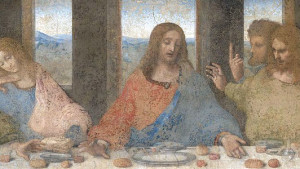Harold Harker looks at evidence for believing the Bible's account of Jesus' resurrection.
It was the greatest event of history. Its results would reverberate for eternity. Yet while it has been recognised as the pivot of all Christian belief, it has come under increasing attack by those who would denigrate the certainty of this epoch-shattering event.
Paul, writing to the Corinthians, commented on the resurrection of Jesus, “And if Christ has not been raised, our preaching is useless and so is your faith” (1 Corinthians 15:14). Eugene Peterson uses more graphic language when he puts it this way, “And face it—if there's no resurrection for Christ, everything we've told you is smoke and mirrors, and everything you've staked your life on is smoke and mirrors” ( The Message ).
You can easily see the implications! If there was no resurrection of Jesus Christ that Sunday morning, then Jesus is not alive today; there's no future, no heaven, no eternal life, and Christianity falls flat on its face!
What happened at Jesus' death?
To find out what happened at the death of Jesus, first look at what the Bible says and then how scholars respond. First, the Bible presents a clear and unequivocal story. Notice how the story is affirmed by each Gospel writer, as they agree on the various aspects of the story:
a) On the Thursday night Jesus had instituted the Communion service with His disciples, and then retired to Gethsemane.
b) After His arrest, He was brought before Annas, the former high priest.
c) He was then illegally arraigned in trial before the Sanhedrin.
d) The next morning (Friday), He was again brought before the Sanhedrin.
e) Jesus was sent to Pilate for condemnation.
f ) Pilate sent Jesus to Herod.
g) Herod returned Jesus to the jurisdiction of Pilate.
h) Pilate handed Jesus over to be crucified.
This happened around 9 am on the Friday.
i) Jesus died on the cross around 3 pm.
j) He was buried in the tomb of Joseph of Arimathea late on Friday afternoon.
k) The priests requested the Roman guard keep the tomb safe.
l) The Resurrection is attested by each of the Gospel writers.
The accounts of resurrection morning include the story of Mary Magdalene coming first to the tomb while it was still dark, finding the stone removed and telling Peter and John of her discovery.
Mary did not know what had happened, saying, “They have taken my Lord away, and I don't know where they have put him” (John 20:13).
When they arrived, John looked in and saw the graveclothes neatly folded and Peter, following him, rushes into the empty tomb. Immediately John realised what had happened. The Bible clearly states that John saw and believed. John was the first to understand that Jesus had risen from the dead and was alive.
Understanding came to the other disciples a little later; first to Mary as she met Jesus in the garden, and for the rest of disciples (except Thomas) that evening as Jesus appeared to them.
For Thomas, belief in the Resurrection came a week later as Jesus again appeared to all of His disciples. The apostle Paul, when speaking of the witnesses who had seen Jesus after the resurrection, mentioned the above appearances, then said, “After that, he appeared to more than five hundred of the brothers at the same time, most of whom are still living” (1 Corinthians 15:6). Thus there were hundreds of witnesses to this extraordinary event, most still living in the time of Paul.
Attempts to discredit
Some scholars and theologians have attempted to discredit the authenticity of the record of the Gospels. The first to do so were the chief priests and Pharisees— the very ones who had endeavoured to keep Jesus locked in the tomb by requesting a whole Roman guard to make it secure! When it became obvious Jesus was no longer in the tomb, they had to invent another story. Again the Bible exposes their duplicity, lies and corruption—paying the soldiers to say that while they slept the disciples came and stole the body, the priests promising to make it right with the governor.
It is most interesting that in the time immediately after the exceptional event of the Resurrection, Peter, who had been previously scared of the authorities and denied Jesus, was now along with John, proclaiming the Resurrection loudly and widely. When accused by the priests before the Sanhedrin, he boldly asserts that Jesus Christ had been crucified by the Sanhedrin, “but whom God raised from the dead” (Acts 4:10).
The priests did not even attempt to raise their feeble transparent excuse of the disciples stealing the body. Obviously this lie had become too well known, with the many witnesses to Jesus after the Resurrection.
Barbara Thiering, an Australian theologian, has put forward the “swoon theory”—that Jesus did not die after being laid in the tomb and was taken by His disciples, and the Resurrection was simply a figment of the disciples' imagination— or an attempt to give them credence for their actions. But other scholars dismiss this as poppycock.
Scholarly support
Many scholars who have looked objectively at the story of the Resurrection come to the inescapable conclusion that Jesus indeed rose from the grave. Clark Pinnock, a Professor of Interpretation at McMasters University, Toronto, said, “There exists no document from the ancient world witnesses by so excellent a set of textual and historical testimonies, and offering so superb an array of historical data on which this intelligent decision may be made.” Even more striking is the statement by Lord Darling, the Lord Chief Justice of England, in 1976: “No intelligent jury in the world would fail to bring in a verdict that the resurrection story is true.” Lawyers have declared the legitimacy and authenticity of the New Testament documents, scholars have repeatedly attested their accuracy. Sir William Ramsay is quoted by Josh McDowell as saying, “Luke's history is unsurpassed in respect of its trustworthiness.” C S Lewis, writer of the Narnia series, was a confirmed atheist in the 1920s.
Yet when he examined the evidence of the Resurrection he was compelled to believe.
As we acknowledge the truth of the Resurrection, we must recognise it as the linchpin that undergirds Christianity.
The truth of Christianity is based on the bodily resurrection of Christ.
No smoke, no mirror
One of the greatest arguments in favour of the reality and truth of the Resurrection is that all the disciples who, scattered over the then-known world, repeatedly affirmed this great fact though facing death. They had nothing to gain if it were a fabrication. They showed that they had everything to gain by its veracity (and everything to lose, if it were otherwise).
No wonder Paul could state so clearly, “What I received I passed on to you as of first importance; that Christ died for our sins according to the Scriptures, that he was buried, that he was raised on the third day, according to the Scriptures” (1 Corinthians 15:3, 4).
There are no smoke and mirrors; this is no fabrication. Here is the basis of faith, and by faith, eternal life. You can be assured Jesus is alive and will soon return. Salvation is assured. The critics' arguments have been refuted; the biblical record is true.






